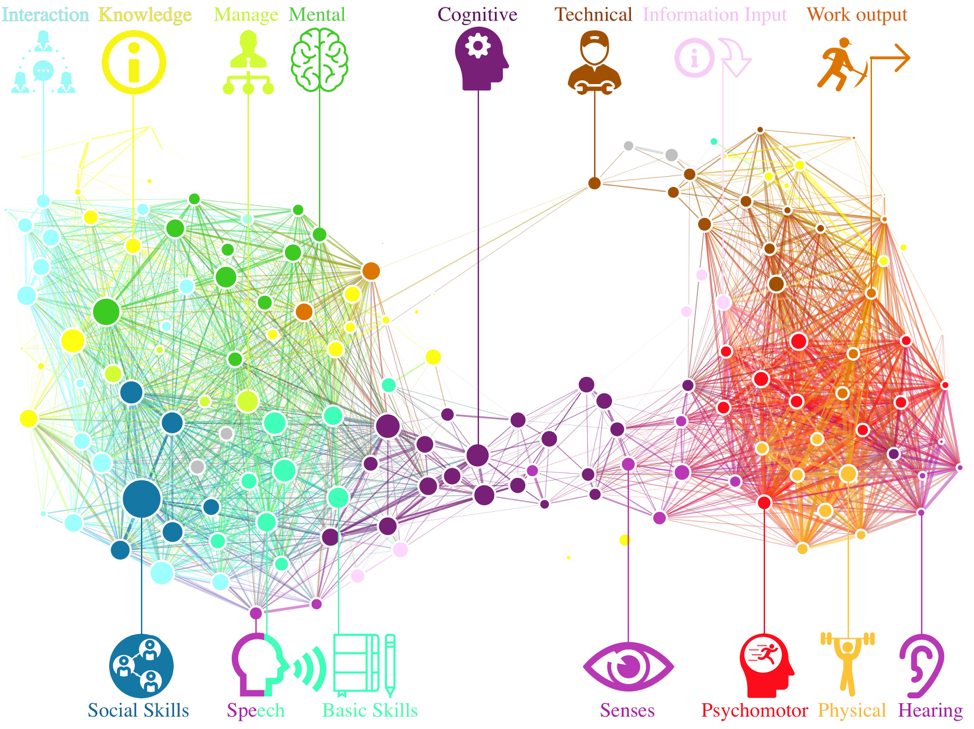Unpacking the polarization of workplace skills.
Published at
Science Advances
2018

Abstract
Economic inequality is one of the biggest challenges facing society today. Inequality has been recently exacerbated by growth in high- and low-wage occupations at the expense of middle-wage occupations, leading to a “hollowing” of the middle class. Yet, our understanding of how workplace skills drive this process is limited. Specifically, how do skill requirements distinguish high- and low-wage occupations, and does this distinction constrain the mobility of individuals and urban labor markets? Using unsupervised clustering techniques from network science, we show that skills exhibit a striking polarization into two clusters that highlight the specific social-cognitive skills and sensory-physical skills of high- and low-wage occupations, respectively. The connections between skills explain various dynamics: how workers transition between occupations, how cities acquire comparative advantage in new skills, and how individual occupations change their skill requirements. We also show that the polarized skill topology constrains the career mobility of individual workers, with low-skill workers “stuck” relying on the low-wage skill set. Together, these results provide a new explanation for the persistence of occupational polarization and inform strategies to mitigate the negative effects of automation and offshoring of employment. In addition to our analysis, we provide an online tool for the public and policy makers to explore the skill network: skillscape.mit.edu.